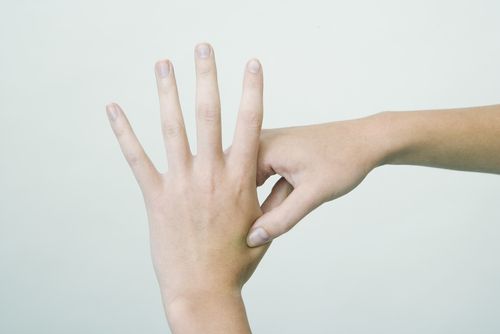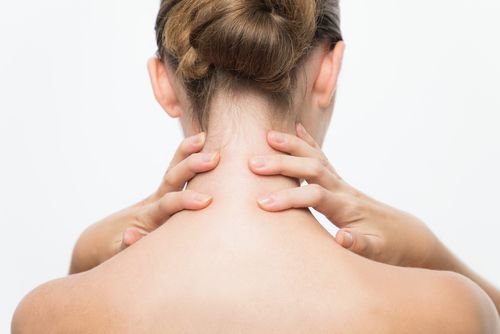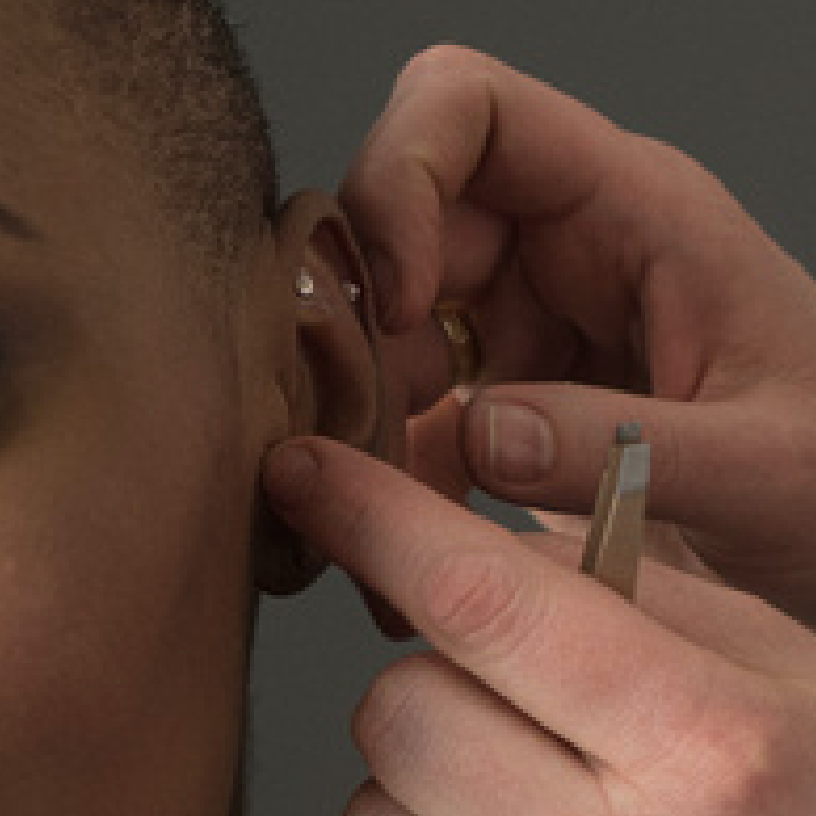Because of the ease-of-use and gentle application, more and more people are using pressure points for anxiety to gain relief. Depending on how severe it is, anxiety can range from making life less enjoyable to completely paralyzing the person who suffers from it. Because of its prevalence, medical professionals have lots of ways to treat anxiety. They include regular CBT sessions, beta-blockers for reducing symptoms, and neuropathic pain drugs such as Gabapentin. Understandably, many people take comfort from the idea of finding natural ways to relieve their symptoms. If you’re looking for a medication-free alternative, you may want to consider pressure points for anxiety relief.
What is anxiety?
Everyone experiences anxious feelings from time to time. When they alert you to possible dangers, they can prove useful. However, if you routinely panic and worry about everyday life, your anxiety may be a clinical condition rather than an everyday emotion. Throughout the United States, this is a condition that affects 18.1% of people.
Those who suffer from anxiety disorders may experience the following symptoms:
- Worrying uncontrollably
- Constantly feeling irritable
- Difficulty concentrating
- Feeling restless
- A sense of doom for no reason
- A rapid heartbeat
- Gastrointestinal disturbances, such as diarrhea
- Insomnia
You may hear medical professionals refer to this condition as Generalized Anxiety Disorder (GAD). It’s important to know that GAD has a large spectrum. At the milder end, the person suffering from anxiety may spend their day worrying but might not show outward symptoms to others. At the severe end, GAD can result in an inability to interact with everyday life. If the condition does become serious, those who suffer from it may find that their relationships, career, and academic pursuits suffer.
What are pressure points?
Pressure points are subtle areas across the body that you can press to stimulate energy flow. The aim of this practice is to promote an overall sense of wellbeing and improved health. Although Western medical practitioners don’t often address pressure points, their stimulation is steeped in medical history in the Far East. Techniques such as acupuncture manipulate them to balance life energy. Practices such as reflexology take a similar approach.
As an ancient practice that’s more than 5,000 years old, the stimulation of pressure points is nothing new. It’s also incredibly accessible, cost-effective, and doesn’t carry all the side effects that medications often come with. In addition to using pressure points to treat anxiety, those who enjoy natural health practices can use them to address headaches, insomnia, and chronic pain.
Stimulating your inner frontier pressure point
The first pressure point that’s worth addressing for anxiety relief is the inner frontier. While placing your hand so that your palm is facing upwards, move three finger widths below the top of your wrist. To orientate yourself correctly, make sure you measure from the central part of your wrist.
Once you feel as though you’re in the right place, press down gently. The inner frontier rests between two of the tendons that support your finger movements, so you should feel a firm-yet-stringy structure on either side of the tip of your finger. Gently apply some pressure to the inner frontier for around four to five seconds. If you wish to do so, you can switch to the other hand and repeat.
One of the greatest perks of using the inner frontier pressure point to relieve anxiety is that you can do it anywhere. It’s a discreet area to tackle, making it ideal for use in situations where you might not want to draw attention to yourself. For example, while you’re on a plane or while you’re at work.

The union valley pressure point and anxiety
One of the chief causes of anxiety is stress. Unfortunately, stress is relatively unavoidable in the modern world, but you can take action to remediate its effects.
Place your hand with the palm facing down and look for the webbing between your thumb and index finger. This is where you’ll find your union pressure point. You should be able to feel the bones of your thumb and index finger on either side.
Massage the union pressure point using your thumb on top and the index finger from the opposite hand beneath. Continue doing this for the count of four to five deep breaths.
It’s worth noting that the union pressure point also provides relief from neck pain and headaches, both of which have a strong relationship with anxiety. Alternative health practitioners advise not to use it if you’re pregnant, though, as there’s a chance it may induce labor.
Much like the frontier pressure point, the union pressure point is discreet. As such, it’s an excellent choice if you can feel a panic attack arising while in a busy environment.
Tackle anxious sensations throughout your body with Yin Tang
Yin Tang is an especially popular pressure point for anxiety among acupuncture practitioners as it tackles the entire body. It’s also the third eye chakra, which allows you to see things as they really are when it’s balanced and open.
You can find Yin Tang right between your eyebrows. Once you locate it, use your index finger to gently massage it for a few minutes. Try alternating between massaging Yin Tang clockwise and counter-clockwise to achieve true balance.
As Yin Tang requires a few minutes of massage rather than a few seconds, you may want to use this pressure point as a prophylactic measure for anxiety. Evidence shows us that anxiety often arises due to workplace and educational pressures. If you’re aware that time in the office or heading to the classroom is becoming problematic, schedule your Yin Tang pressure stimulation for before you leave the house. If you set aside a few minutes to stimulate it each day in the same way you schedule time to brush your teeth, making it a part of your morning routine will become easy.
Addressing the heavenly gate pressure point for anxiety
As an anxiety pressure point that can bring relief throughout the day, the heavenly gate is an ideal target for those who feel overwhelmed by their condition. This pressure point rests on the outer aspect of your ear. You’ll find it in the shell-like area toward the top of your ear, at the tip of the triangle hollow.
Like Yin Tang, heavenly gate requires a little more attention than other areas for it to prove effective. If you want to massage it for a few moments only, try massaging this area for two minutes on either ear before leaving the house.
Alternatively, you can alternate between using devices that apply low-level pressure throughout the day and manually increasing that pressure yourself. Products such as ear seeds are easy to apply for most people. Each seed comes from the black vacaria plant. When you use the right kit, you can apply them to your heavenly gate pressure point and secure them in place. In doing so, you’ll benefit from mild pressure throughout the day that allows for anxiety relief. When you feel as though you need to soothe your emotions further, you can stimulate the seed and maximize its effects.
All-day stimulation of heavenly gate with ear seeds is ideal for anyone who’s continuously plagued by anxiety, stress, and insomnia. Arguably, you can apply additional pressure in the hour before bedtime to increase your chances of getting a good night’s sleep. Around 25% of people experience acute insomnia throughout the year and 6% experience it as a chronic condition. If you’re looking for a medication-free way to tackle your case, ear seeds and applying pressure to the heavenly gate area could be right for you.

Apply pressure to your heavenly pillar to tackle insomnia
If you experience insomnia as a part of your anxiety, you’ll already understand how your lack of sleep can become a vicious cycle. When you feel anxious, you sleep less. At the same time, trying to function on minimal sleep can induce anxiety.
One way to break out of this vicious cycle is by applying pressure to the heavenly pillar. You can find the heavenly pillar between the tip of your spine and the base of your skull. The area should feel firm and bony. Using two fingers, apply steady and firm pressure to your heavenly pillar for one minute.
As this is a way to induce relaxation and defeat insomnia, applying pressure to your heavenly pillar is a practice you should save for your bedtime routine. Consider using this technique alongside other natural relaxation practices, for example, meditation.
Relieve the physical symptoms of anxiety with your shoulder well
Although anxiety is a mental health condition, it often produces physical symptoms. Many of these symptoms are the same as the ones you experience when you feel scared. They can include becoming aware of a rapid heartbeat, feeling short of breath, feeling nauseous, and stomach cramps. One way to address these symptoms naturally is by applying pressure to your shoulder well.
You’ll find your shoulder well by tracing your finger down the curve of your neck and stopping when you reach the inside edge of your shoulder. You should be able to feel the shoulder muscle beneath, but it’s a large structure so don’t worry if it isn’t immediately obvious. Once there, apply firm pressure by pinching it between your index finger and your thumb. If you’ve recently encountered a rotator cuff injury, you may need to seek advice before doing this.
Applying pressure to your shoulder well is a dependable way to reduce nausea and palpitations. As two of the more disturbing physical side effects of anxiety, they often leave sufferers feeling scared and panicked. You can pinch the area for a few seconds to experience relief.
Is there any evidence to back up using pressure points for anxiety?
As an alternative therapy, the stimulation of pressure points for anxiety doesn’t gather as much attention as conventional approaches. However, if you look at the evidence for practices such as acupuncture – which uses the same pressure-based concepts – you can see that it’s an effective practice.
Evidence Based Acupuncture has published a promising overview of the different studies that support the use of pressure points for anxiety. Some of the findings include:
- A 2016 systematic review focusing on 400 patients found that acupuncture is as reliable as conventional therapies for anxiety.
- Another review that focused on 120 patients found that it has more than twice the reduction in symptoms compared to conventional treatments.
- A systematic review from 2018 revealed how some studies have highlighted acupuncture as being more effective than certain pharmacological therapies designed to treat anxiety.
While these studies focus specifically on the art of acupuncture, their outcomes are applicable to pressure stimulation. As psychology today highlights, this has a lot to do with the way our bodies respond to acupressure. When pressure is applied to certain target areas, neurochemical changes take place in the brain. Studies have revealed how those who use acupressure to relieve anxiety experience heightened serotonin levels. As serotonin plays a strong role in regulating emotions and inducing a sense of calm, it’s a much-needed asset when trying to address anxiety.
Another promising study focused specifically on patients who were due to receive treatment in a surgical setting. Although surgery isn’t a daunting experience for everyone, there’s no denying that it makes many people feel nervous. The results revealed that those participating experienced an immediate sense of relief from their symptoms, giving them the chance to relax before their surgery started. Because of this, it’s possible to assume that you could use pressure stimulation to tackle the nerves that arise before your anxiety triggers take place.
Although anxiety is a condition that’s difficult to eliminate, increased awareness of pressure point stimulation could provide you with some relief. Unlike conventional medicine, this is a treatment avenue you can explore at home. For many, the sense of relief they gain from taking control of their condition without another person’s input is empowering. As many of the acupressure techniques featured here offer instant relief, you may find they’re preferable to other approaches that take a while to work.
If the idea of using day-long anxiety relief with the use of ear seeds appeals to you, pick up some ear seeds here..


